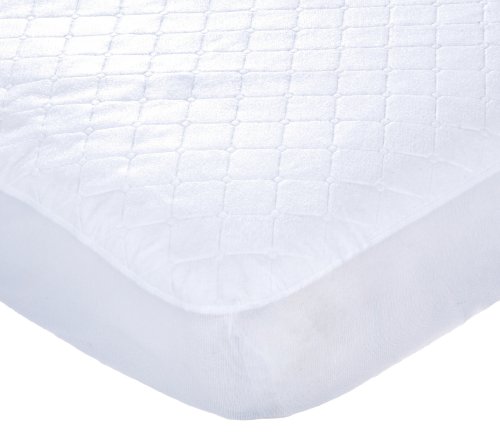The American Academy of Pediatrics recommends that normal, healthy babies be placed to sleep on their backs on their crib bedding to reduce the chance of Sudden Infant Death Syndrome (SIDS). Some babies prefer sleeping on their stomachs and will not roll into this position. The following are sleeping safety precautions:
Be sure the baby's crib is in good repair. Slats should not be more than 2 3/8" apart. The mattress should be firm and fit the crib. The space between the mattress and crib side should not allow more than two finger widths. Dress your baby in comfortable clothing, and lay them on the crib bedding; provide the amount of blankets that you would find comfortable sleeping. Place your baby on his or her back to sleep. When babies are old enough to roll over, they will find their own comfortable position. Keep the room temperature at about 70 degrees F.
3 In 1 Crib
Never use thing plastic materials like trash bags as mattress covers under the crib bedding. These may suffocate the baby if allowed near the face.
Do not allow cords from drapes or blinds near the crib, or stringed items that could strangle the baby. Never put toys with small parts that could choke the baby in or near the crib.
Never let your baby sleep on a water bed or on soft, loosely filled cushions under the crib bedding. These can mold to the baby's face and interfere with breathing.
Never let the baby sleep on a couch or adult bed unattended, unless you've made a sufficient barrier to act as a crib wall.
Sleeping Patterns:
It usually takes six to ten weeks for development of a good 24-hour schedule with the longest period of sleep at night. By three months of age, most full-term, healthy infants should sleep through most of the night. If your infant has not settled into a good sleeping pattern by five or six months, take a close look at bedtime routines. Are they sleeping in the same bed every night? Could a warm bath or rocking help?
It is okay to let your baby fuss. It is part of the learning process. Babies learn how to soothe themselves and relax into sleep.
Some bright ideas:
A waterproof changing pad Diaper for every two hours, plus 2 more, just in case! Small plastic bags for diaper disposal A cloth diaper for burping A lightweight blanket or sweater Cute crib bedding Two or three small toys to entertain baby Once baby is eating solids, a jar or two of unopened baby food, a spoon, and eventually, a finger-food to snack on At least two bibs
A Well-Stocked Diaper Bag
If you are bottle-feeding -- a bottle, nipple, hood, and cap as well as an unopened can of ready-to-feed formula or sterilized water and pre-measured powder formula to add to it. (If you're taking opened or premixed formula - a cold pack and insulated bag to keep it from spoiling.) Travel sizes of diaper rash ointment, and infant acetaminophen (NEVER give aspirin). A change of baby clothes and crib bedding in case of spit-up or a leaky diaper
Special Price!!! Carter's Keep Me Dry Waterproof Fitted Quilted Crib Pad, White
Nov 09, 2011 07:08:31
Click for larger image and other views

Carter's Keep Me Dry Waterproof Fitted Quilted Crib Pad, White Feature
- Fitted quilted crib pad is 100% waterproof
- Pad is quilted for extra quality and comfort
- Pad is 100% polyester, filling is 100% vinyl, with reinforced corners
- Fits a standard crib mattress or toddler mattress
- Machine Wash
Carter's Keep Me Dry Waterproof Fitted Quilted Crib Pad, White Overview
Carter's crib pads are keepers. This quilted crib pad is designed to help baby feel at ease while catching Z's! Shop our full line of Carter's baby accessories.SAVE NOW on the special offers below!
Available In Stock. |
| This Carter's Keep Me Dry Waterproof Fitted Quilted Crib Pad, White ships for FREE with Super Saver Shipping. |
Price : Click to Check Update Prices Please. |
